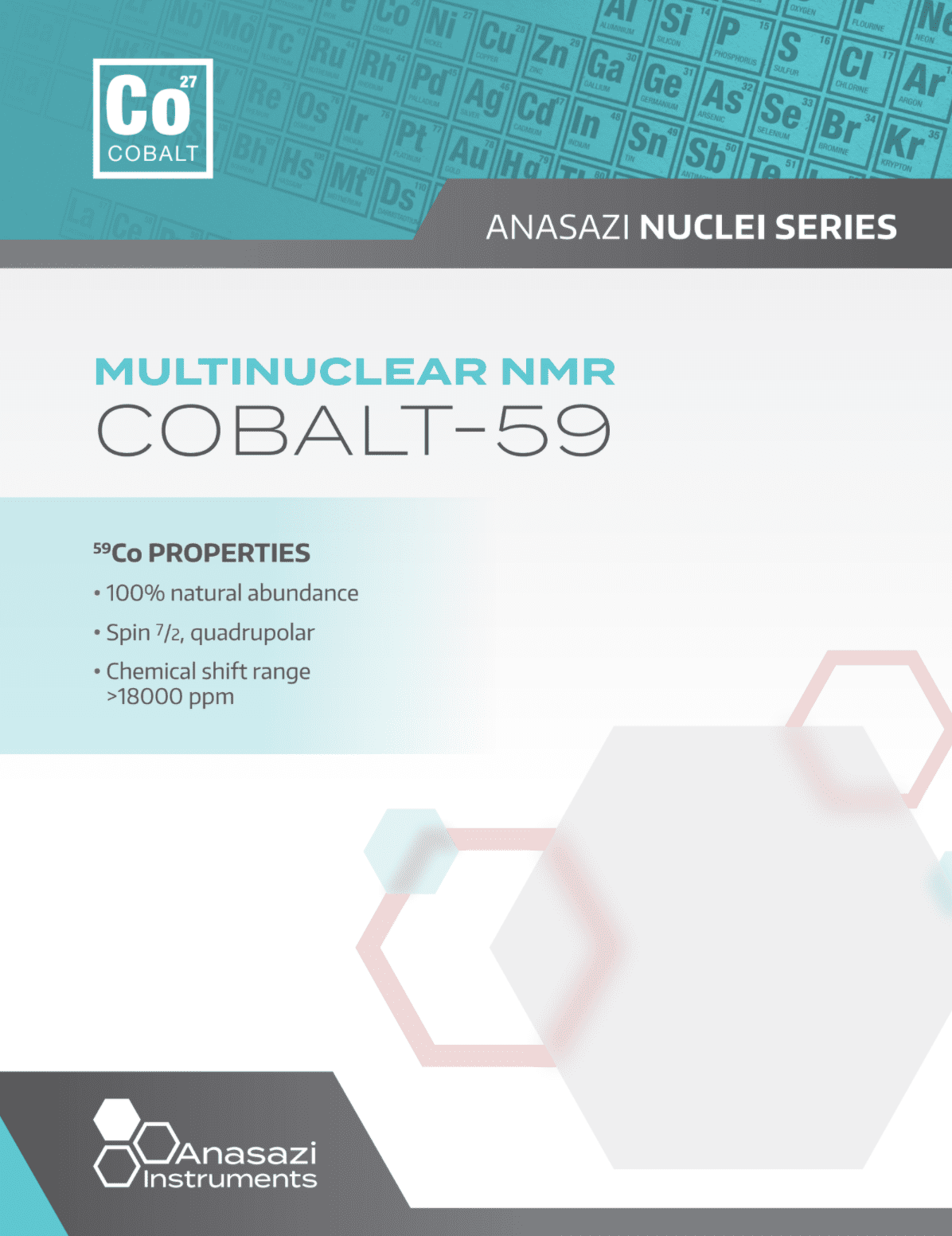Using Cobalt NMR Spectroscopy To Analyze Compounds
31P
29Si
11B
59Co
15N
What can you do with 59Co?
Since many cobalt complexes are paramagnetic and because 59Co is quadrupolar, not all cobalt compounds are amenable to NMR studies. However complexes of the diamagnetic Co3+ ion that possess a high level of tetrahedral or octahedral symmetry can easily be studied.
Did You Know?
Your cells rely on cobalt. Vitamin B12, or cobalamin, contains cobalt nuclei and is essential to human life. Modern life also depends on cobalt. It is likely found in your pocket, backpack, and perhaps car as part of the cathode of lithium batteries. The increasing demand for cobalt and difficulties mining in the Democratic Republic of Congo have led to mining expeditions on the deep seabeds of the Pacific Ocean.
The cobalt-59 nuclei also stands alone among all magnetically active nuclei. In fact, cobalt-59 has the largest range of chemical shifts of any nuclei, >18000 ppm or 1.8 %. Cobalt was also one of the fist nuclei studied which advanced the theory of chemical shift.
Since the cobalt-59 nuclei is so sensitive to chemical changes, changes to the first and second coordination spheres are readily apparent. Temperature variations and solvent effects also can significantly change the resonance frequency, thus care must be taken of experimental design.
Recommended Literature
| P. Granger in Encyclopedia of Nuclear Magnetic Resonance, John Wiley & Sons, Inc., Chichester, 1996; Vol. 6, 3897–3898. | P. Laszlo in NMR of Newly Accessible Nuclei, Academic Press, New York, 1983; Vol. 2, 253-274 |
59Co Properties
- 100% natural abandance
- Spin 7/2
- Chemical shift range of >18000 ppm
- Quadrupolar moment 0.4 x 10-28 m2
- Receptivity 1570
- Gyromagnetic ratio 10.05 MHzT-1
- Reference standard K3[Co(CN)6]
- Freq EFT-90: 21.357 MHz

Nuclei Series Download
To download a copy of Cobalt-59 for your use and reference click on the download PDF link below.
